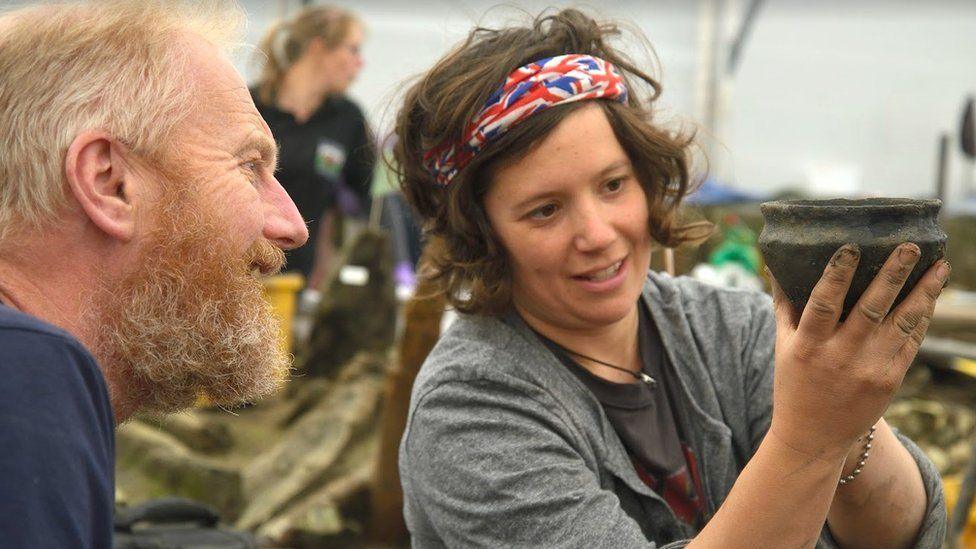Rare Bronze Age log boats displayed for first time
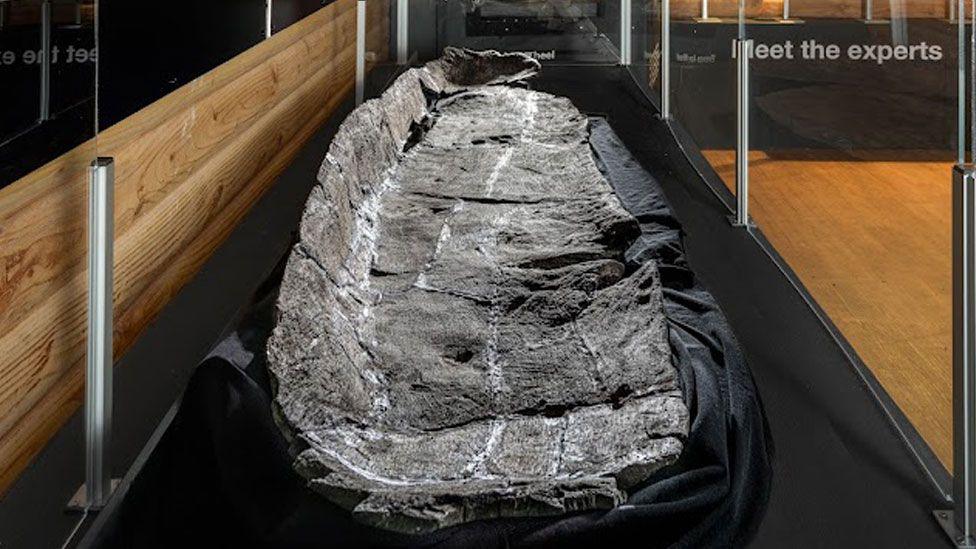
The log boats are internationally significant, according to Historic England which helped fund their preservation
- Published
Rare Bronze and Iron Age log boats unearthed upstream from a settlement dubbed "Britain's Pompeii" have gone on display for the first time.
The vessels have been painstakingly conserved since their discovery at Must Farm quarry in Whittlesey, Cambridgeshire, between 2011 and 2012.
Three of the nine excavated boats form the heart of a new permanent exhibition at Peterborough's Flag Fen Archaeology Park.
"This is our heritage, this is what our ancestors were doing 3,000 years ago," said general manager Jacqueline Mooney.
"Nowhere in the world is there another collection of so many man-made log boats... and they belong to us: the people of the Fens, the people of Peterborough."

A mural welcomes visitors with an artist's impression of two men in a boat heading towards the Must Farm settlement
Must Farm settlement, with its treasure trove of preserved everyday artefacts, was excavated by Cambridge Archaeological Unit (CAU) a few years after the boats' discovery.
Flag Fen visitors can see a 6.3m (20ft 6in) Middle Bronze Age oak vessel; a 2.2m (7ft 2in) fragment of a Middle Bronze Age oak boat with an intricate repair on its hull; and a 0.8m (2ft 6in) fragment of an Early Bronze Age boat made from maple.
CAU archaeological researcher Iona Robinson Zeki said: "They reveal that these simple yet supremely effective boats were used to navigate a fenland river for almost a millennium."
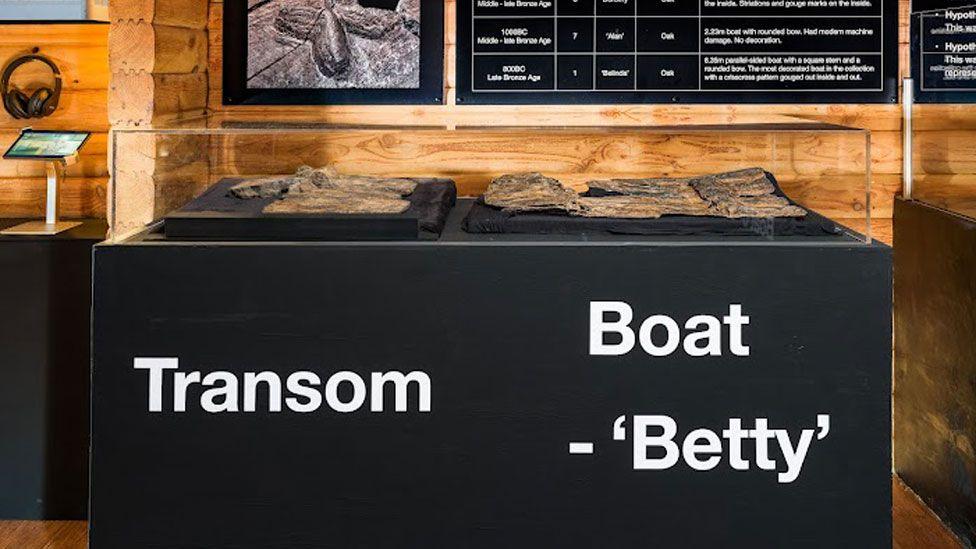
Each of the boats was given a name, with one called Betty after a longstanding Flag Fen volunteer who died aged 93 earlier this year
The vessels, which ranged in age from nearly 2,500 to about 3,500 years old, also revealed fascinating details about prehistoric carpentry and construction techniques.
Ms Mooney said: "It's a fantastic thing to think [they were] hewn out of solid logs 3,000 years ago with just bronze axes - and you can see the axe marks."

Archaeologists from Cambridge Archaeological Unit excavated the vessels and analysis has identified their tree species and felling methods
Their preservation was made possible by funding from a number of sources, including the landowner and developer Fonterra.
There were also grants of more than £73,000 from Historic England and almost £49,000 from Peterborough City Council.
Ms Mooney said the boats were soaked in a solution of water and polyethylene glycol, known as peg wax, for 10 years.
"Once they are structurally sound, we take them out of the water and dry them intensely, we clean all the wax off and then join them together again to look like boats," she added.
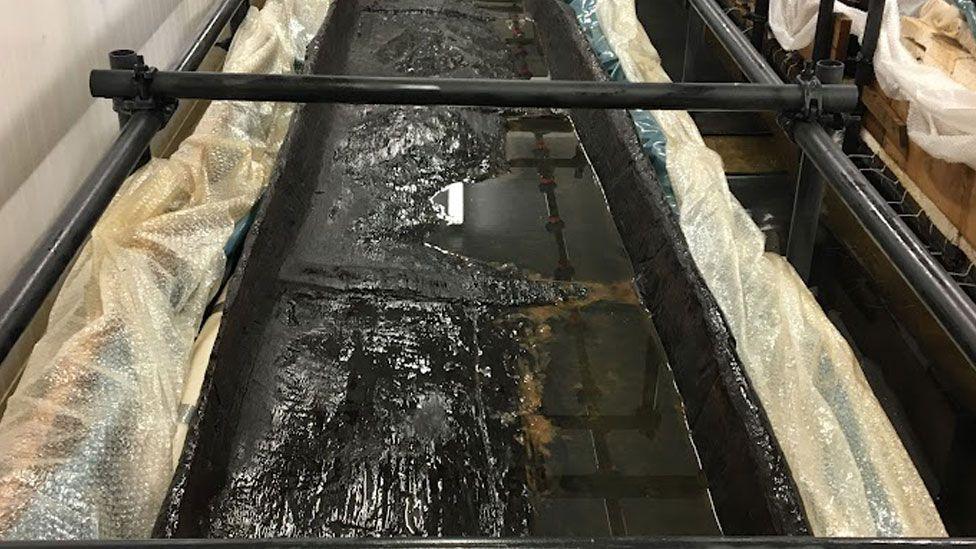
If they had not been treated with peg wax, they would have dried out and blown away like dust, said Jacqueline Mooney
Ms Mooney paid tribute to the skills of the park's conservator Mary Evans, under expert guidance from York Archaeological Trust.
"She has spent many hours of her life holding teeny tiny bits of the boat together so they adhere back together, the job she has done is fantastic and I'm so proud of the work Mary and her team have done," she said.
Claudia Kenyatta and Emma Squire, co-CEOs of Historic England, said the boats "represent an extraordinary window into our prehistoric past".
Shabina Qayyum, leader of Peterborough City Council, urged "everyone to come and visit".
Bronze Age Boat Discoveries at Must Farm also includes replica tools, interactive displays and demonstrations of ancient craft techniques.
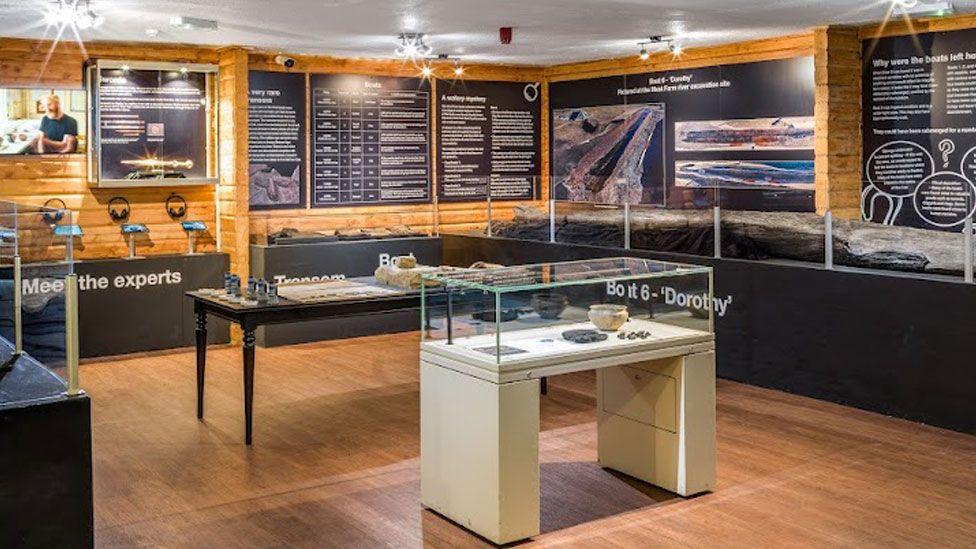
The park sits in the middle of a Bronze Age landscape, including a timber causeway and platform discovered by Time Team archaeologist Dr Francis Pryor in 1982
Get in touch
Do you have a story suggestion for Peterborough?
Follow Peterborough news on BBC Sounds, Facebook, external, Instagram, external and X, external.
- Published5 November
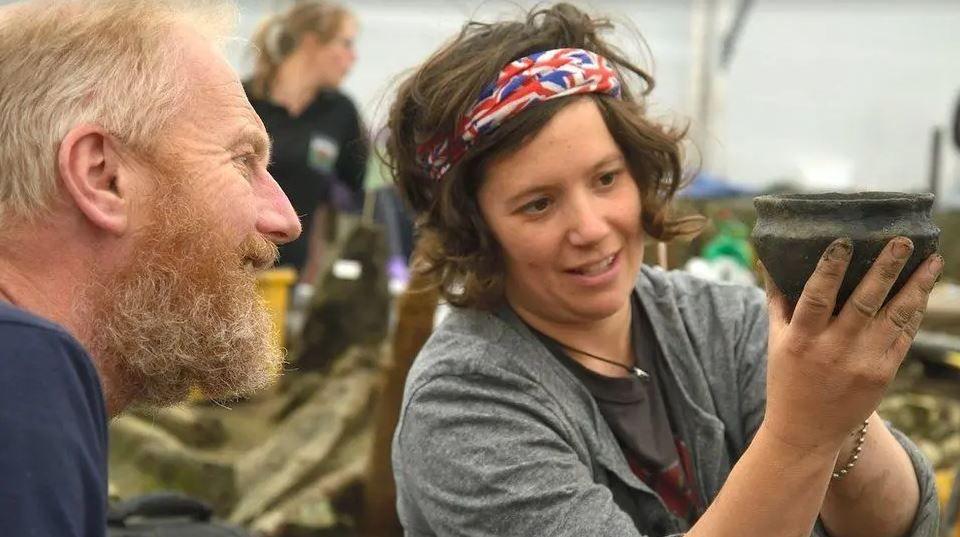
- Published26 July 2024
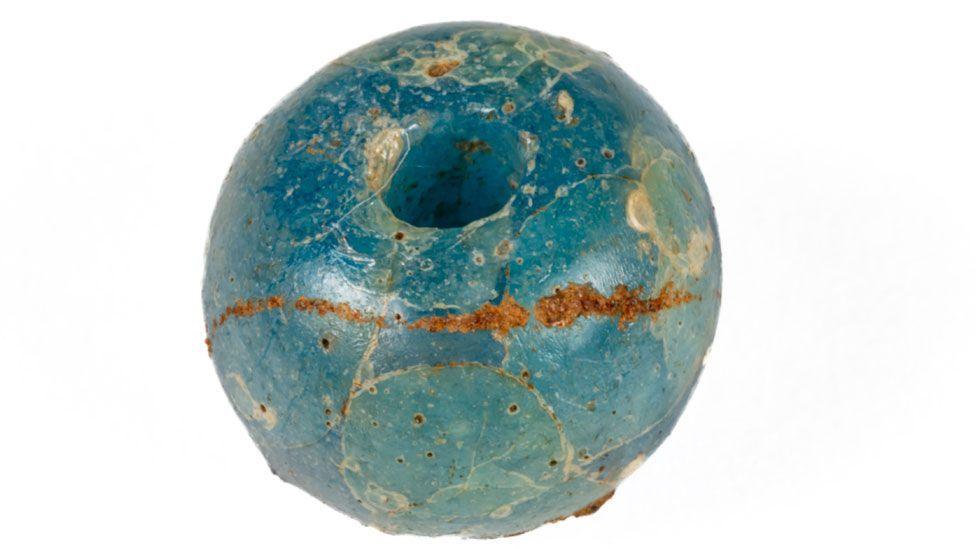
- Published26 April 2024
